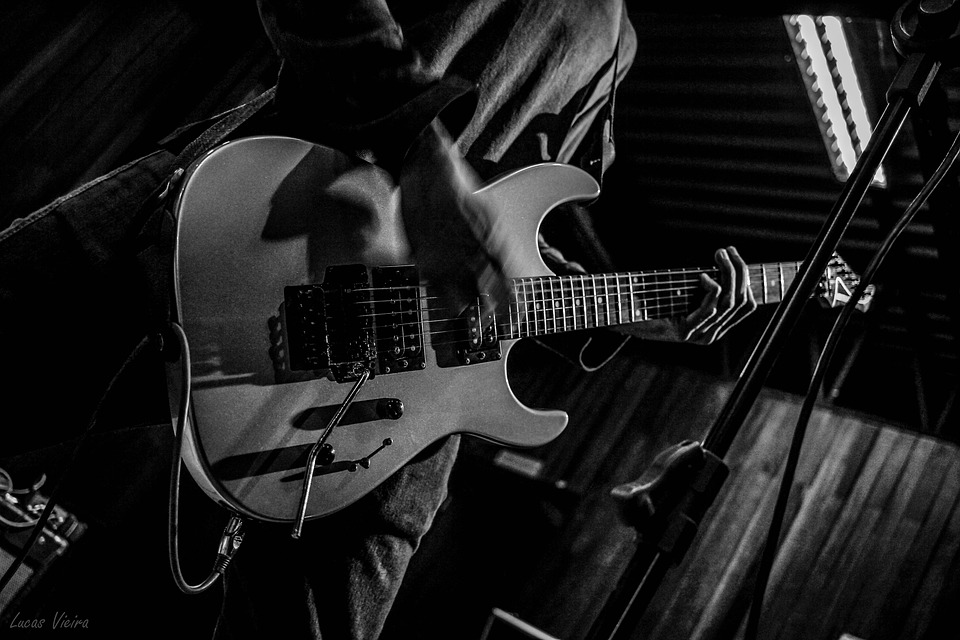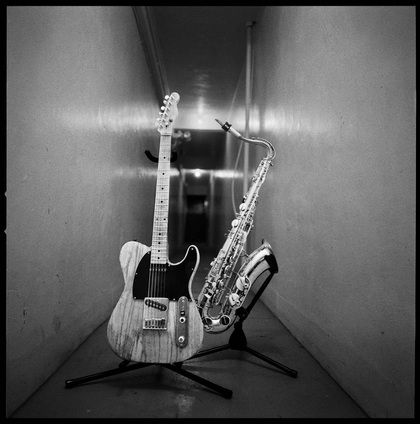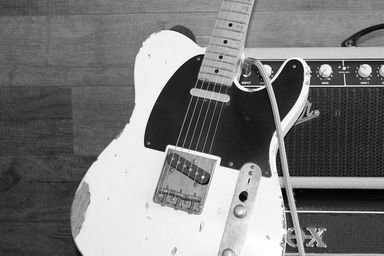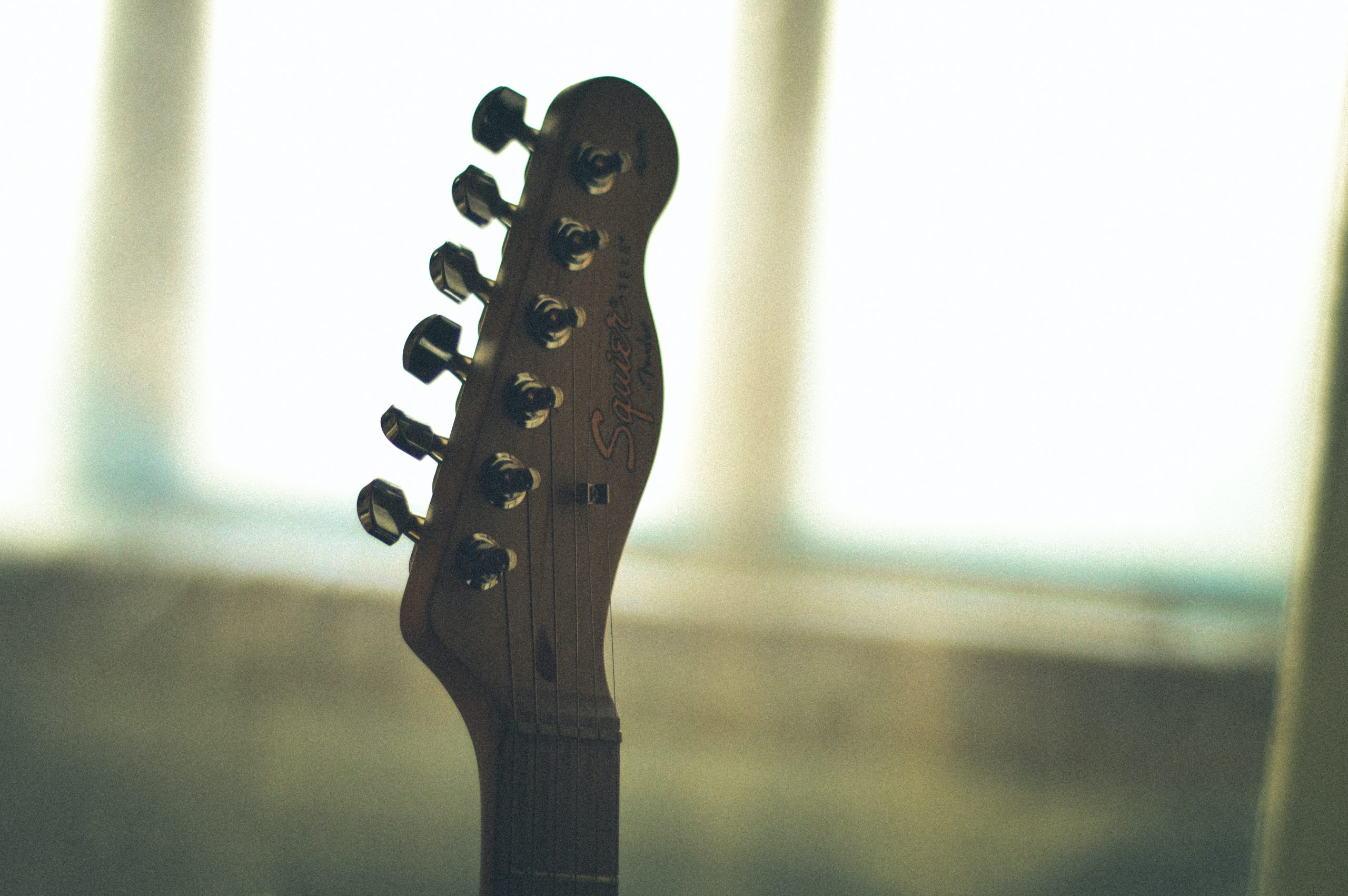Sometimes all it takes is a suggestion or a new perspective to jump-start your improvisation skills or give your solos a new lease of life, especially if you’re stuck in a rut. As guitarists we tend to fixate on scales, technique, and chops when there are far more important areas to pursue when it comes to soloing. In this article we get into some of the subtleties of improvisation with 10 soloing tips and how to apply them to your playing to get better results.
Scales are the Alphabet
Talking of scales, our first soloing tip has to do with an unhealthy fixation on 3NPS, CAGED or any other kind of scale system can stagnate your soloing abilities because if you think about it, scales are to music as the alphabet is to language learning: a convenient way of presenting and ordering information, but one that must be brought to life by the player or speaker. The most critical element of learning scales is transferring the pattern you’re studying onto the guitar neck; once this is achieved, you’re free to start bringing it life (continuing to run the scale pattern becomes a technical exercise). If you compare this to language learning, it’s when letters form words and sentences are made. In other words, to make use of a scale you must be able to manipulate its component parts and turn it into something coherent such as a lick or phrase.
Licks and Vocabulary
While we’re on the subject of licks and phrases, don’t underestimate the power of learning them! A lot of players dismiss the idea of learning (other players’) licks and phrases because they want to be original. While this is certainly admirable, it’s easier to become somewhat original once you’ve built up or amassed a good vocabulary from anything you’ve heard, learned or transcribed. Going back to the language analogy, any well-read person will be able to come up with several ways to say the same thing; this knowledge is acquired through reading and exposure to the language. Music works in much the same way; if you learn several blues licks, after about 15 or so, you should be able to come up with your own variations on them. Remember, the focus here is not on memorizing a bunch of licks; the important thing is the process of learning them and the neural pathways this creates in your brain that will facilitate improvisation for you. In other words, it doesn’t really matter if you learn the licks or not, so don’t think you’ve failed or you’re not learning anything if you can’t get a lick down and remember it. What’s more, learning a lick and then trying to insert it coldly into a solo is hard to pull off and sounds unnatural. It’s better to pave the way to come up with your own licks and phrases.
Play What’s in Your Head (or not)
This soloing tip seems to be the holy grail of improvisation on any instrument but take a moment and ask yourself whether there is anything in your head. It’s one of those things that gets repeated ad nauseum to the point where you start to worry when there’s nothing in your head when you go to improvise. It also depends on how fast you play. To play what’s in your head, or at least be aware of what you’re playing in a purposeful way, you need to slow right down. The more you speed up, the more your playing becomes a reflex action based on muscle memory and patterns; you can still play somewhat purposefully but things are a little foggy at higher speeds. At the end of the day, you don’t have to play what’s in your head to be a great improviser, though as you start to play in a more purposeful manner, you’ll find that idea pop into your head that you want to pursue and develop.
Put the Song First
Here’s a great soloing tip, before you even begin to worry about playing what’s in your head, you should be playing what the song requires, or at least something that compliments it and/or takes it somewhere. This is a huge perspective change and is almost the polar opposite of the, ‘here comes my big solo, let’s throw in everything but the kitchen sink’, ego-driven approach. If you listen to players like Jimmy Page, George Harrison, Eric Clapton, and to a certain extent, Jeff Beck, their stand-out solos are ones that take the tune to another level; they’re serving the song, not themselves. Eric Clapton is possibly the finest example of this; for him the song comes first. If you’re judging Eric on pure technical soloing ability, then you’re missing the point. For him, the guitar solo is an integral part of the song but not the reason for the song’s existence.
Meet the Audience Halfway
Part of serving the song is what I call, ‘meeting the audience halfway’. If you create purely technical guitar driven music, you can skip this one because your audience (whether you like it or not) will most likely be just other guitarists and musos. If, on the other hand, you create guitar music hoping to reach Joe Public, you’re going to be disappointed. Few players have really achieved this aside from Dick Dale, Hank Marvin, Mark Knopfler, and a few others, perhaps Joe Satriani. The problem here is that you’re not meeting the audience halfway. Joe Public thinks that a guitar solo is what Eric Clapton does while he’s not singing, and to catch his ear you’re going to have to make it relevant to him.
No Wrong Notes
This is from the Victor Wooten school of thought. We’re often taught that scales break the 12 notes of music down into 5, 6, or 7 right notes and 5 or so wrong notes that must be avoided at all costs. As you develop as a player, you come to realize that these so-called wrong notes are actually the most interesting and the challenge becomes how to incorporate them into your lines and phrases. Basically, if a note grooves it can’t be wrong. If you’re thinking that you’re going to hit a wrong note and react like you just stepped in something, then it’s going to sound like a wrong note. But if you can play it as convincingly as you play the so-called right notes, it can sound amazing.
Genres and Vocabulary
The great thing about the guitar is its sheer versatility and use in almost every genre of music. If you’ve been playing for a while, you’ll no doubt have built up some vocabulary in a couple of genres, perhaps more. You’ll find that most genres share a lot of common vocabulary, though this is often not quite enough to sound convincing in a genre you don’t play that often. For example, if you’re well-versed in blues and rock, you have a good starting point for jazz improvisation due to the common ground, but perhaps not enough to make it sound like proper jazz, as it were. Instead of hacking your way through a jazz standard with your rock and blues vocabulary, I recommend taking a quick course in another genre such as the ones below:
Jazz for the Curious Guitarist
Bluegrass for the Curious Guitarist
Slide Guitar – Slide Soloing Essentials
Country Guitar Fundamentals
Rockabilly Guitar for Beginners
Discover Classical Guitar – Level 1
You may not see yourself playing a lot in these genres but learning another style will enrich your playing no end and give you new ideas and techniques to take back to your more familiar styles of playing.
Ear Training
Having a great pair of ears will make you a great all-round musician, there’s no doubt about it. In fact, you should always be doing something to work on the connection between your ears and your fingers. The problem is that ear training, as it’s normally taught, is not the most interesting thing you can do with a guitar and provides no instant gratification. Besides, learning to recognize random intervals in isolation is somewhat of a bizarre exercise if you consider that virtually all music is tonal; therefore, recognizing intervals in the context of a cadence or a key is a far more productive way to use your ear training time. As luck would have it the app, Functional Ear Trainer, does exactly this. I highly recommend this app, it improved my ear no end and it’s also FREE!
Horizontal Playing
If you haven’t checked out our eBook on horizontal playing, you’re in for a treat as approaching the neck in a horizontal fashion gives your ears the chance to make decisions or even take over during your improvisations. I noticed that most beginner students, when they begin to explore single-note playing, tend to play scales and melodies up and down one string. Indeed, this is the intuitive way to do it and a great soloing tip as you can see the space between notes when you lay them out in a linear fashion as oppose to a box shape that goes vertically across the neck. This is a great exercise to do when combined with the above ear training app and is not as impractical as you might think. Two horizontal players that spring to mind are Steve Vai and John Scofield; if you watch them closely, you’ll see that they both make ample use of the neck in a horizontal fashion.
Don’t Forget to Groove
For our last soloing tip, next time you go to take a solo, you might want to consider injecting a little rhythm into your licks and runs instead of firing off a barrage of notes. Oz Noy is an absolute master at this and even has a video lesson explaining the concept here. I love doing this with the basic triad of the chord I’m improvising over as this will give you three strong notes to groove with. You’ll find this especially useful if you tend to run out of ideas when soloing or get lost on the fretboard as if you shift your focus to rhythmic playing, you only need a handful of notes to fill the space.
If you adopt even one of these ideas, I guarantee your improvisations will improve tenfold!



